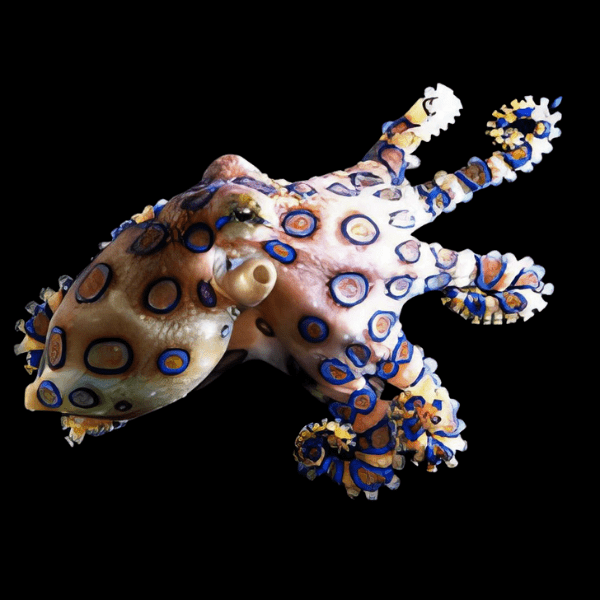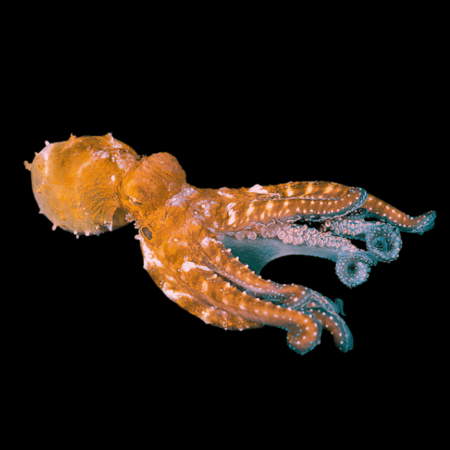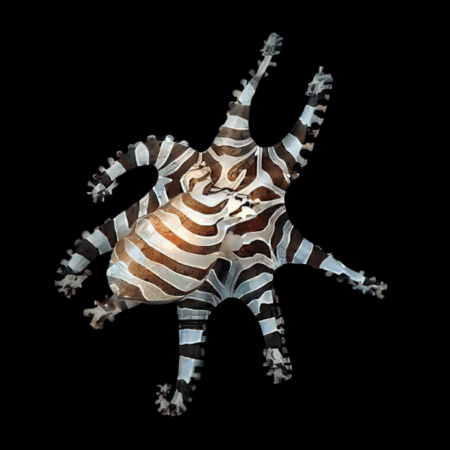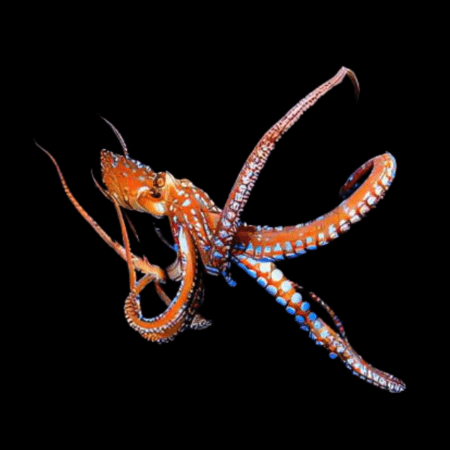Description
Blue Ring Octopus Hapalochlaena Lunulata
The greater blue-ringed octopus (Hapalochlaena lunulata) is one of the most venomous marine creatures in the world. It has a soft, sac-like body with eight sucker-covered arms and can grow up to the size of a golf ball as an adult. Its body is typically tan to dark yellow in color, with up to 25 faint blue rings that can flash a brilliant iridescent blue when the animal is stressed or threatened. This species is found in the Indo-Pacific region, from northern Australia to Japan, including Papua New Guinea, the Solomon Islands, and Indonesia as far west as Sri Lanka. They inhabit shallow coral reefs, tide pools, and sandy/silty areas at depths up to 20 meters. The blue-ringed octopus primarily feeds on small crustaceans like crabs, shrimp, and hermit crabs. They use their powerful venom, which is more toxic than cyanide, to quickly paralyze their prey before consuming it. Fortunately, they are not generally aggressive towards humans, but their venom can be fatal if they feel threatened and bite. Due to the extreme danger posed by their venom, the blue-ringed octopus is not recommended for novice aquarium hobbyists. They require very specialized care and housing to ensure the safety of the owner. Appropriate tank mates would be other peaceful, non-aggressive invertebrates. The water parameters must be pristine, with stable temperature, pH, and salinity levels. In summary, the greater blue-ringed octopus is a fascinating but highly venomous cephalopod that should only be kept by experienced aquarists with the proper precautions and equipment. Its beautiful coloration and unique behaviors make it an interesting subject, but its deadly venom demands the utmost respect and caution.



